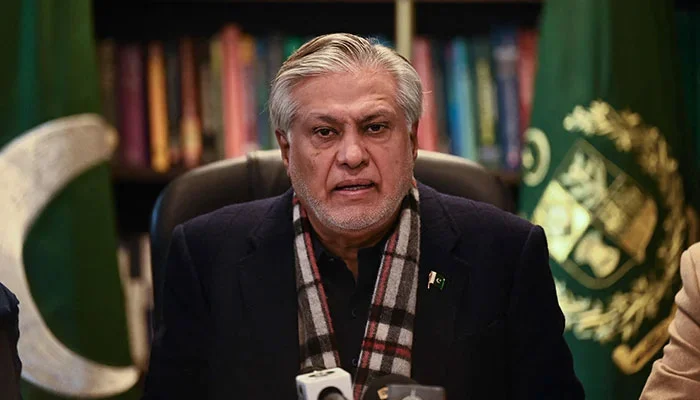Finance Minister Ishaq Dar on Tuesday directed the Federal Board of Revenue (FBR) to accelerate its efforts to achieve the true tax potential of the country.
The financial czar made the remarks while presiding over a meeting in Islamabad to review the performance of the FBR.
Dar extended his full support to the FBR in the performance of its duties for revenue collection.
During the meeting, FBR Chairman Asim Ahmad gave a detailed presentation on revenue targets and the performance of the FBR during the first nine months of the current fiscal year. It was stated that the FBR would make all-out efforts to meet its revenue target in the remaining months of the current financial year.
On February 1, the FBR claimed that it had collected Rs3,965 billion in tax collection in seven months (July-Jan) period and will have to collect Rs3,505 billion more in the remaining five months (Feb-June) of the current fiscal to meet the Rs7,470 billion target.
According to an FBR announcement, the tax machinery had surpassed the tax collection target envisaged for January 2023 with a margin of just Rs4 billion; its collection stood at Rs537 billion against the fixed target of Rs533 billion. However, FBR faced a revenue shortfall of Rs225 billion in December 2022 target.
It is argued by the FBR authorities that December 2022 was wrongly fixed on the higher side and they would be able to collect the fixed target for Income Tax, Sales Tax and Federal Excise Duty (FED). However, it might face a shortfall of Rs170 billion on account of Customs Duty collection.
The latest estimates suggest that the devaluation of the exchange rate will help the FBR overcome its expected shortfall in the current fiscal year.
According to the official statement issued by the FBR, the revenue collector had demonstrated performance during January 2023 and had not only achieved the monthly budgetary target of Rs533 billion but also surpassed it by Rs4 billion.
According to provisional figures, the FBR collected Rs537 billion in the month of January, showing a growth of 23% compared to the same month last year.
Cumulatively, the FBR had collected Rs3,965 billion in the first seven months of the current financial year against Rs3,367 billion collected in the corresponding period of the last year, depicting a growth of 18%.
The third quarter of the current fiscal year started with an impressive performance and the FBR was committed to meet the annual budgetary target of Rs7,470 billion for the current financial year despite economic challenges, said the statement.
According to the tax regulator, direct taxes collection had shown growth of 48% during the first seven months of the current financial year.
The growth in domestic taxes was 40% during the same period. The contribution of domestic taxes has also increased from 50% last year to 59% during the current year.

 Latest News12 hours ago
Latest News12 hours ago
 Latest News12 hours ago
Latest News12 hours ago
 Latest News12 hours ago
Latest News12 hours ago
 Latest News12 hours ago
Latest News12 hours ago
 Latest News12 hours ago
Latest News12 hours ago
 Latest News12 hours ago
Latest News12 hours ago
 Latest News12 hours ago
Latest News12 hours ago
 Latest News12 hours ago
Latest News12 hours ago























